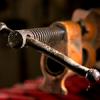I was pretty psyched to see this today.
Of course, there is already a good article by Dave Weaver on wood central, but it's nice to see this topic getting some front page acknowledgement in the "mainstream" WW press. And Kees has been out front on this issue from the beginning. So, congrats, Kees and Wilbur.





 Reply With Quote
Reply With Quote





